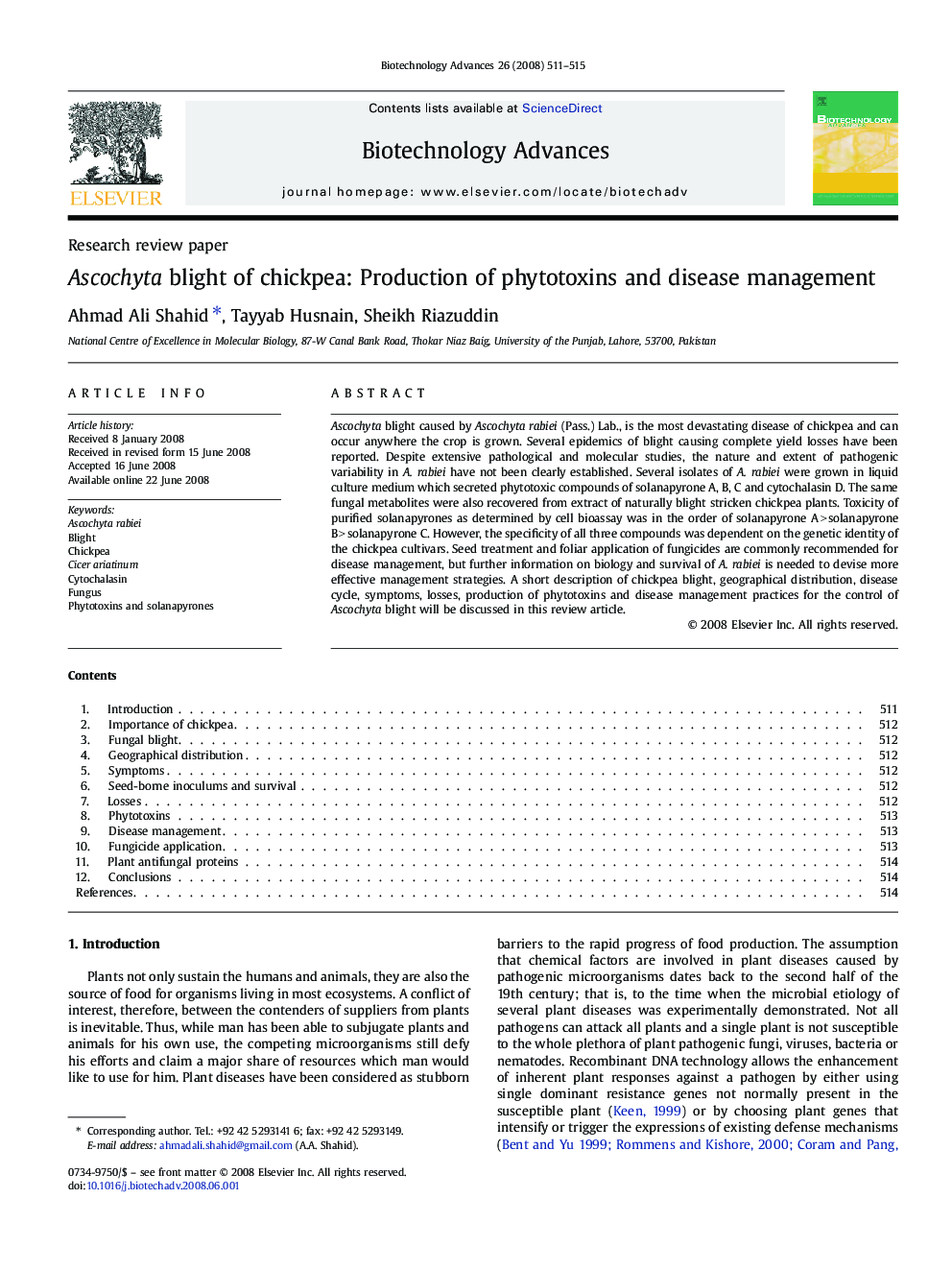| کد مقاله | کد نشریه | سال انتشار | مقاله انگلیسی | نسخه تمام متن |
|---|---|---|---|---|
| 14485 | 1224 | 2008 | 5 صفحه PDF | دانلود رایگان |

Ascochyta blight caused by Ascochyta rabiei (Pass.) Lab., is the most devastating disease of chickpea and can occur anywhere the crop is grown. Several epidemics of blight causing complete yield losses have been reported. Despite extensive pathological and molecular studies, the nature and extent of pathogenic variability in A. rabiei have not been clearly established. Several isolates of A. rabiei were grown in liquid culture medium which secreted phytotoxic compounds of solanapyrone A, B, C and cytochalasin D. The same fungal metabolites were also recovered from extract of naturally blight stricken chickpea plants. Toxicity of purified solanapyrones as determined by cell bioassay was in the order of solanapyrone A > solanapyrone B > solanapyrone C. However, the specificity of all three compounds was dependent on the genetic identity of the chickpea cultivars. Seed treatment and foliar application of fungicides are commonly recommended for disease management, but further information on biology and survival of A. rabiei is needed to devise more effective management strategies. A short description of chickpea blight, geographical distribution, disease cycle, symptoms, losses, production of phytotoxins and disease management practices for the control of Ascochyta blight will be discussed in this review article.
Journal: Biotechnology Advances - Volume 26, Issue 6, November–December 2008, Pages 511–515